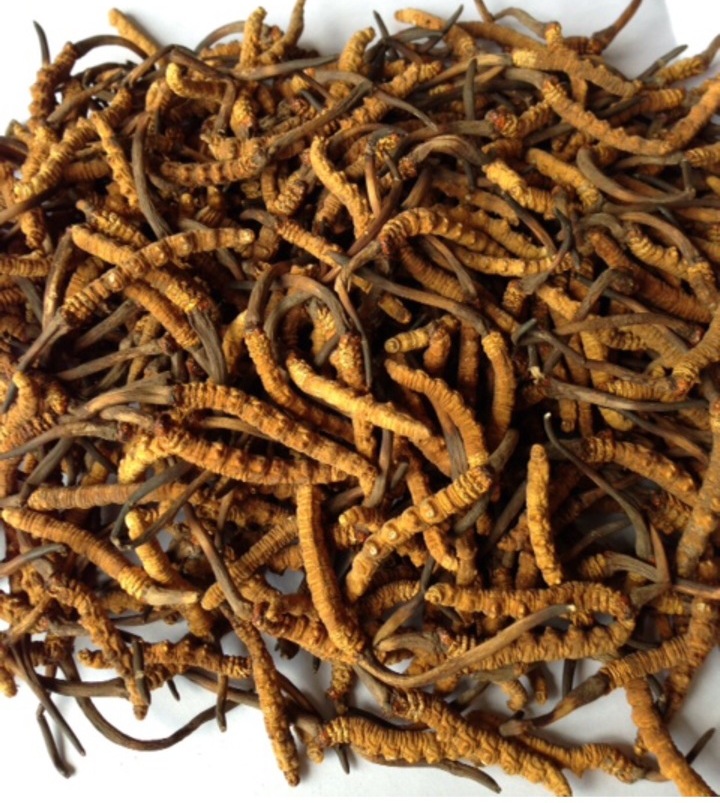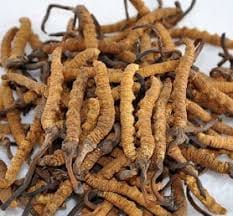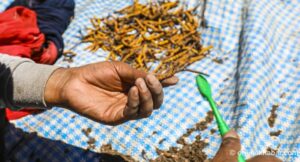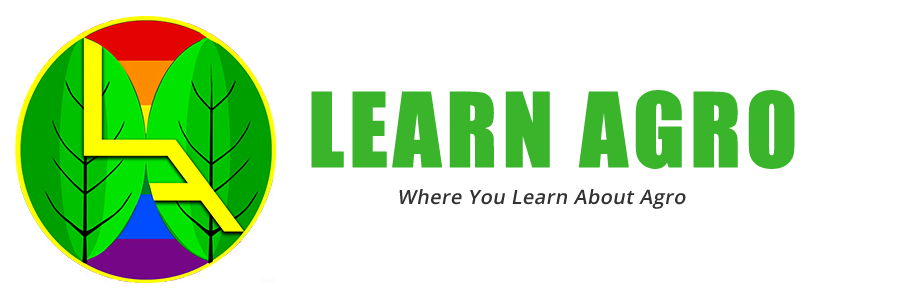Why is Cordyceps (Yarsagumba) known as biological gold?

One of the most expensive fungi in the world is half insect and half-plant isn’t it strange? It’s strange but true. Cordyceps (Yarsagumba) is a globally recognized medicinal plant found in deep Himalayas of Asia.
This medicinal herb has the capability of curing various fatal diseases and extremely good at increasing immunity power that’s why they are also called Himalaya gold. Let’s explore more below.
What is Cordyceps?


Courtesy: Nepal Cordyceps Sinensis
All around the world, there are more than 50,000 species of medicinal plants that have been used for curing various diseases. Among all of those herbal plants, Cordyceps is one of the most recognized and expensive medicinal plants.
Yarsagumba (Cordyceps Sinesis) also known as caterpillar fungus is a rare herb with unique characteristics found in the Himalayan Region of Nepal, India, Bhutan, Japan, Korea, and Thailand. Cordyceps are formed from the combination of caterpillar and fungus, and is found in the meadows above the altitude of 3500m. This unique herb is rich in its medicinal value and its popularity is overwhelming all over the world.
Formation of Cordyceps (Yarsagumba)


Courtecy: Nepal Cordyceps Sinensis
The caterpillar larvae grow in the soil of altitude between 3500m-4000m during summer and before the monsoon starts, the fungus scientifically known as Ophiocoryceps Sinensis is settled in the head of the caterpillar. The fungus then receives the energy from the caterpillar to grow which eventually leads to the death of caterpillar.
In winter, the fungus starts coming up from the caterpillar head, which will be the length of approx. 5-7 cm. Then, the herb is harvested from March to May, before the monsoon rains start.
Biological Benefits of Cordyceps

Courtesy: Yarsagumba-caterpillar fungus
Cordyceps is popularly called as summer plant and winter insect in Tibet. It is famous in China for its traditional medicinal values. Cordyceps is a highly expensive herbal medicine in the world with lots of benefits. It helps in curing:
- Kidney problems
- Hypertension
- Asthma
- Tuberculosis
- Chronic bronchitis
- Heart problems like hypertension and cardiovascular
- Chronic hepatitis
- Anemia
- Liver disorder
- Weakness
- Tumor of many kinds.
Besides, this the medicinal fungus also reduces fatigue, boost the immune system, and improves sexual performance as a powerful aphrodisiac medicine, so it is also known as Himalayan Viagra.
Why Cordyceps is compared to the value of gold?

Courtesy: Yarsagumba- cordyceps
Cordyceps is the expensive fungus found above the snowline Dolpa, Humla, Jumla, Kalikot, Mustang, Manang, Rasuwa district of Nepal, and Bhutan, Tibet, China and also found in the Himalayas of India.
The most popular destination for selling Cordyceps is in China. The value of Cordyceps is measured in terms of kilograms (kg).
- A local harvester can earn $18,000 per kg.
- According to some sources, top-grade Cordyceps price is as high as $24,000 per kg in the international market.
The people of the Himalayan region earn their livelihood by harvesting and selling Yarsagumba. It is regarded as a major source of their economy whereas harvesting Yarsagumba is not an easy task. People risk their lives because of their high value.
The story of Cordyceps hunter
-
- People of all age group goes in search of Yarsagumba annually at the time of harvesting at the altitudes over 3500m.
- Children do not go to school, colleges and other organizations are also closed totally as more number of hands equals to more harvest.
- All of them climbs Mountains in search of Yarsagumba leaving all their households work.
- People stay there for a few weeks and even for 2-3 months.
- Generally, people make the group and start searching.
- The search starts at a very early morning, and one has to kneel down and stay very low to see the tip of the Cordyceps.

Courtesy: Yarsagumba- cordyceps
- The villagers have to live in tents, withstand the harsh cold where some people even lose their life as well.
- The dew at the tip of Cordyceps makes them clearly visible in early sunlight rays and easier to find them out.
- In a whole day, the expert finder can get from 50-100 pieces at max if the finder is lucky.
- With Cordyceps comes the risk as thief and robbers and even some time threat to life and family also. While people keep firearms with them too.
- One they are collected the cordyceps need to be brushed to remove dirt from them.

Courtesy: Yarsagumba- cordyceps
- The traders are just present at the spot and but they cheap and sell it at a high price in the international market.
Yarsagumba is an expensive herbs with a lot of medicinal values. The Yarsagumba helps to uplift the country’s economy and is also important for biological well-being. Hence, Cordyceps is called as a Biological Gold.

Nothing is absolutely perfect, so despite all the benefits of biological gold “Cordyceps” there also exist some of the Side effects of Cordyceps. Some of the common side effects are:
- It slows the blood clotting
- Increases the risk of bleeding at the time of surgery
- Increases the system of autoimmune diseases
Also, there isn’t any information mentioned regarding the safety of consuming Yarsagumba by a pregnant woman.
As Cordyceps helps to improve the immune system, in some cases overdose of Cordyceps may trigger auto-immune diseases like Lupus, multiple sclerosis, rheumatoid arthritis (RA), or other conditions. So it is always good to take the prescription before consuming it.
Please do share with us what questions or concerns do you have or we are always open to take input for the reader’s side.




excellent info on moringa plants, where can I purchase seeds to plant it?
The best place is amazon at your location. Try checking some agro stores around you. Let us know for more questions.
A very interesting article. I thought they were part of pilea peperomioids. These nasturtium grow like weeds where I live in southern part of South Africa. The only problems are snails. They are hardy and face drought conditions well. We don’t get frost. I love them xx
Thank you for your comment. I really appreciate it. Please be with us and help us share with your friends and family.
You are so right about choosing well drained soil for planting the grapes. It worked great when we tried.
Thank you for your comment. We appreciate it.